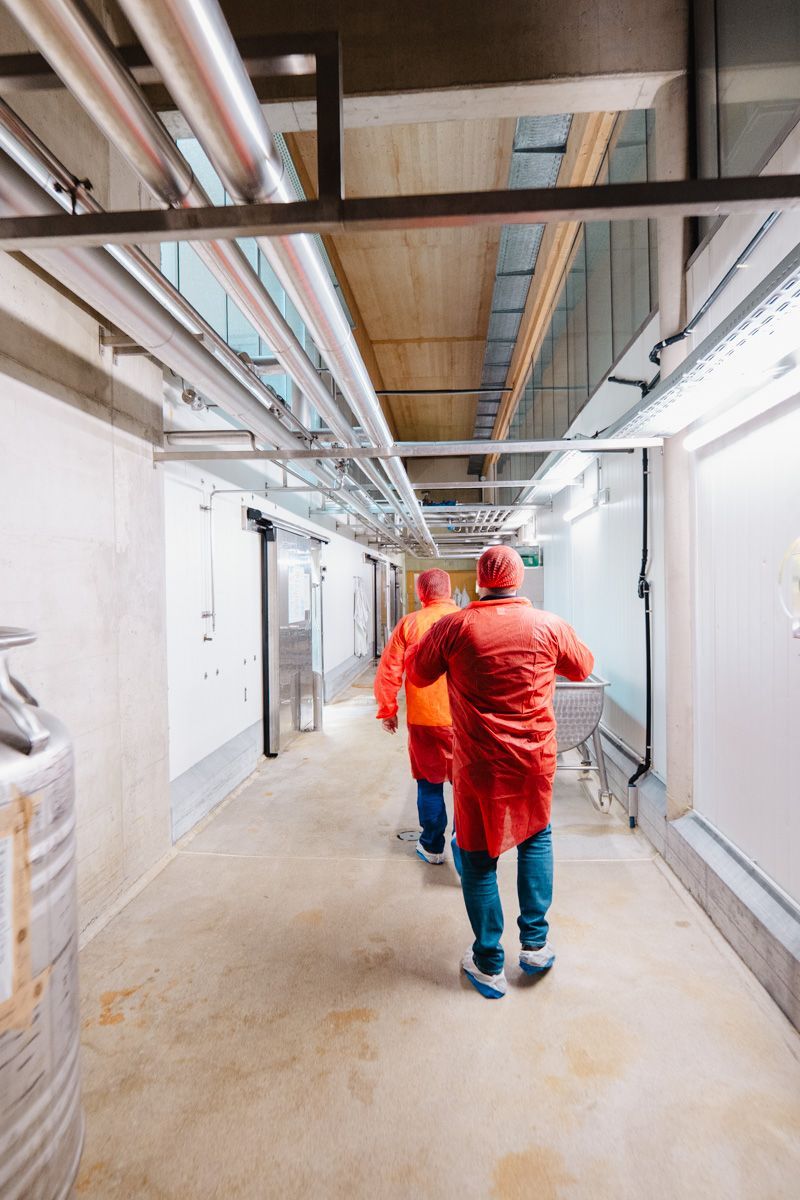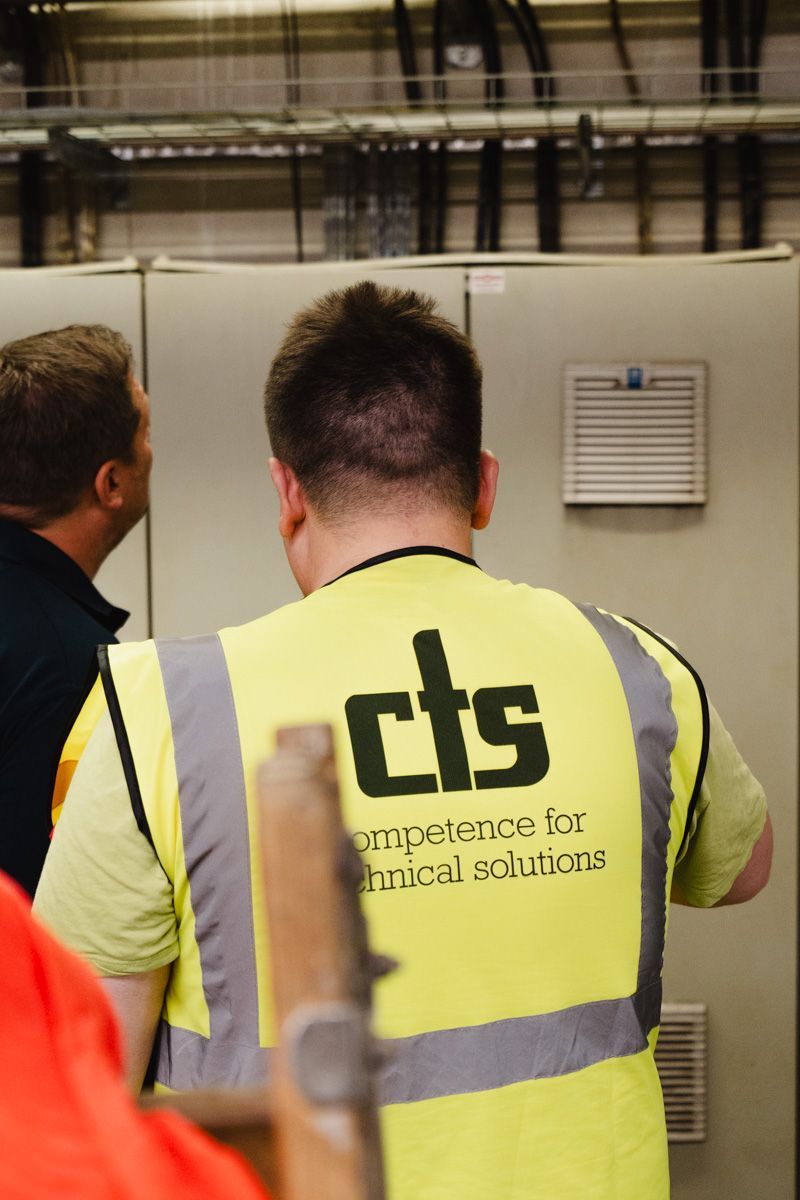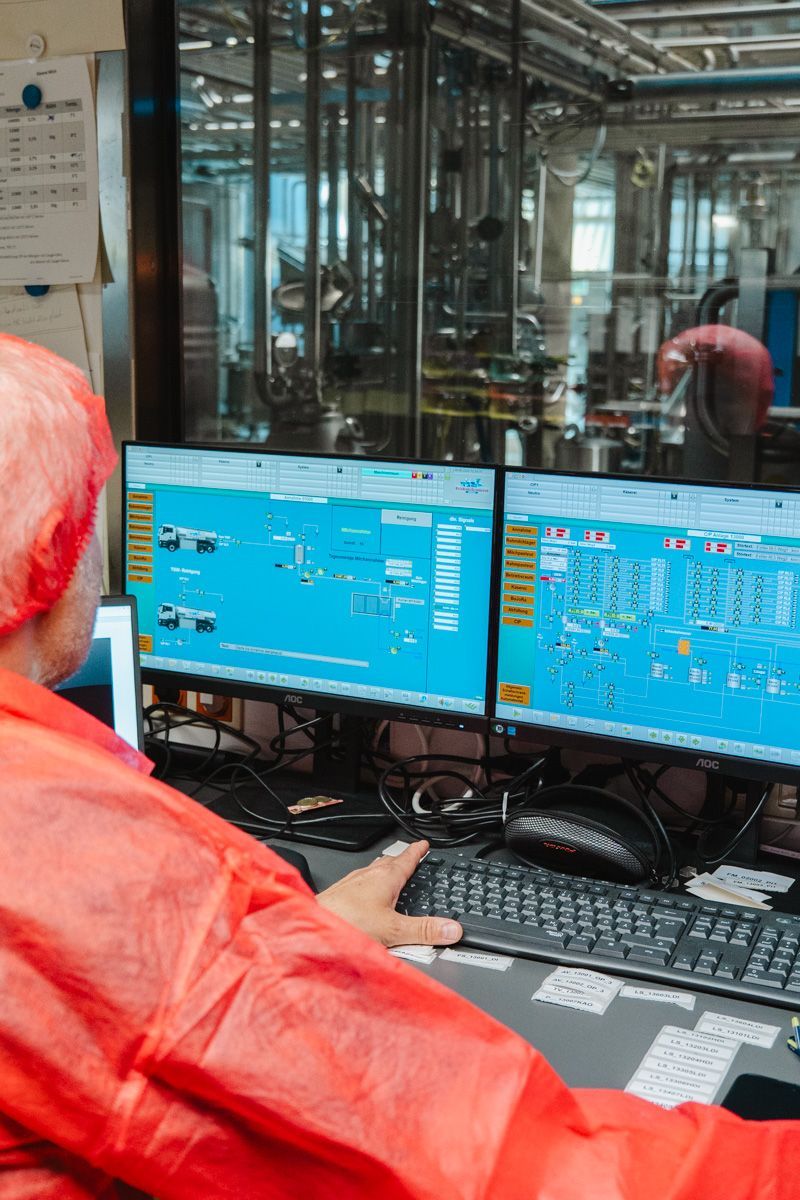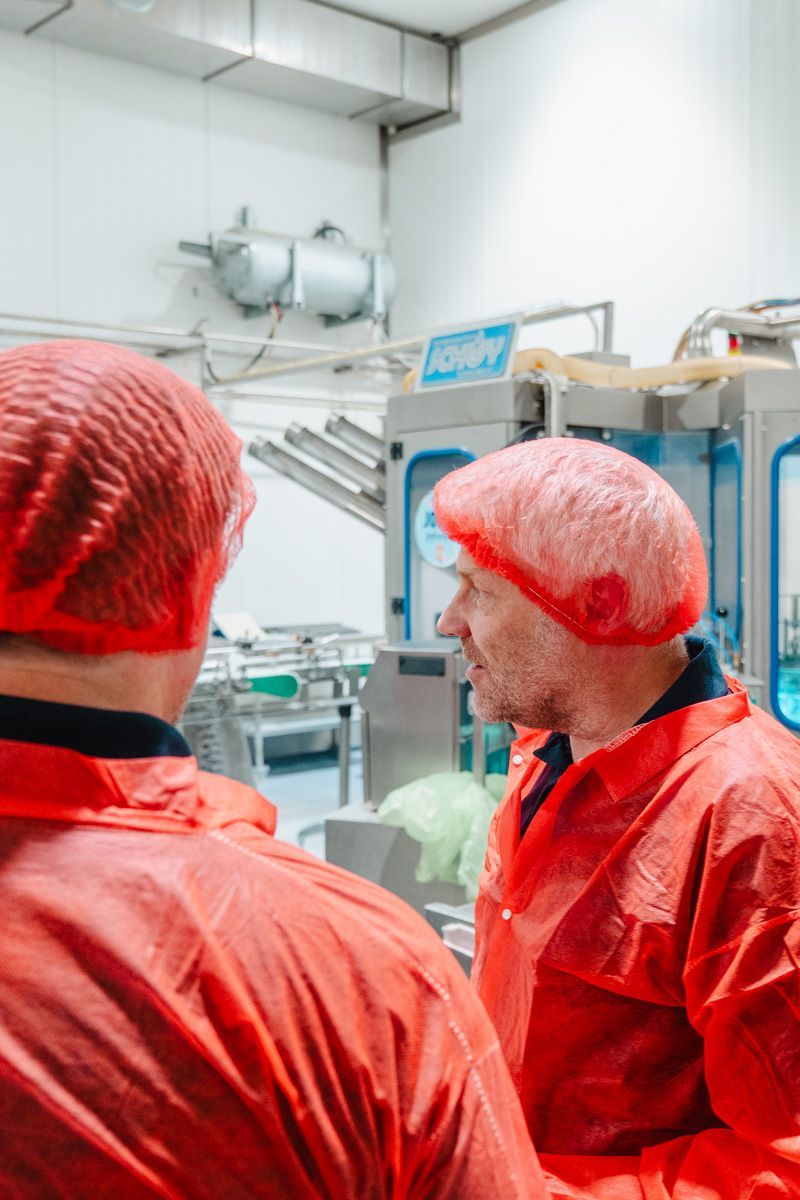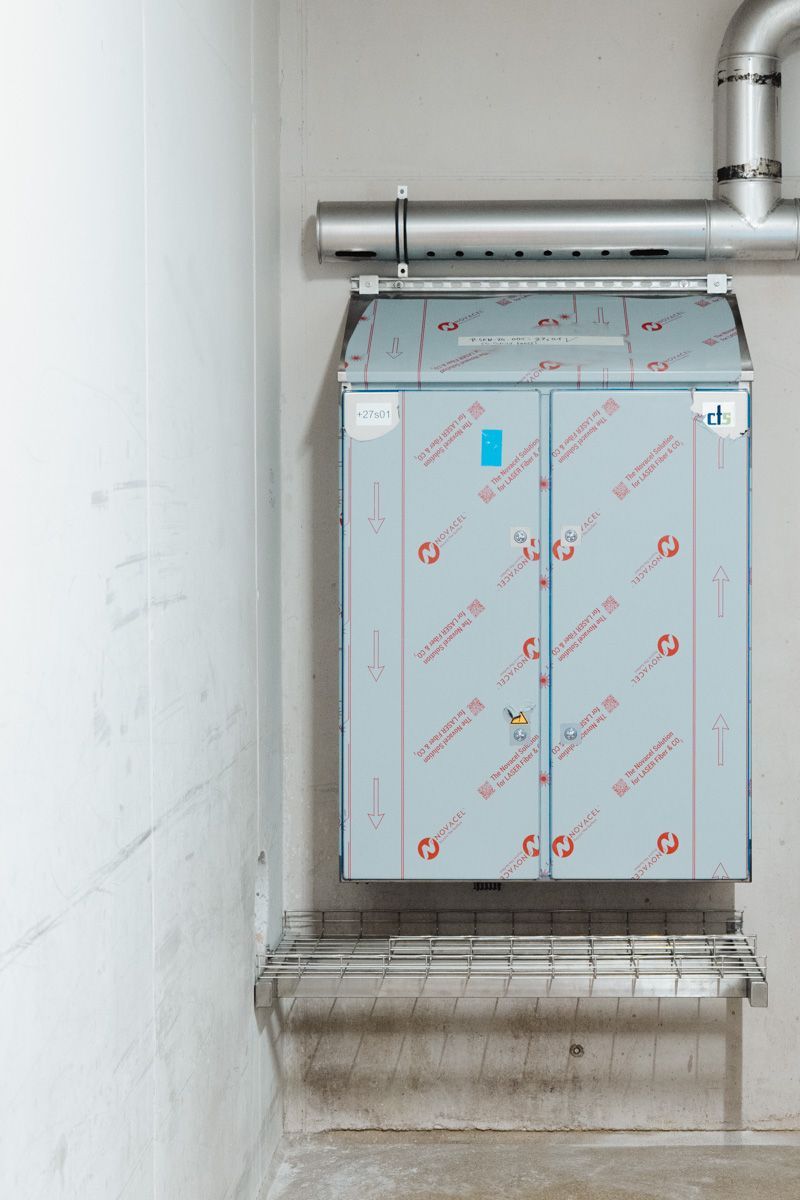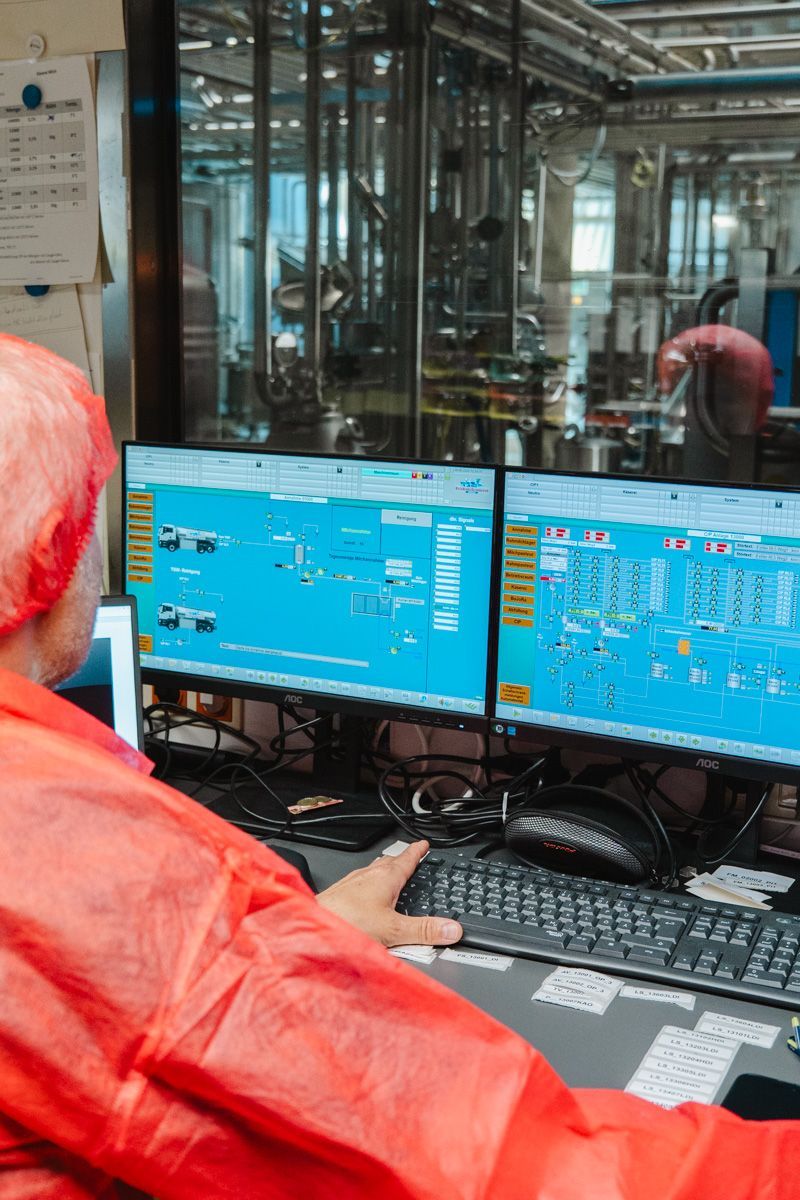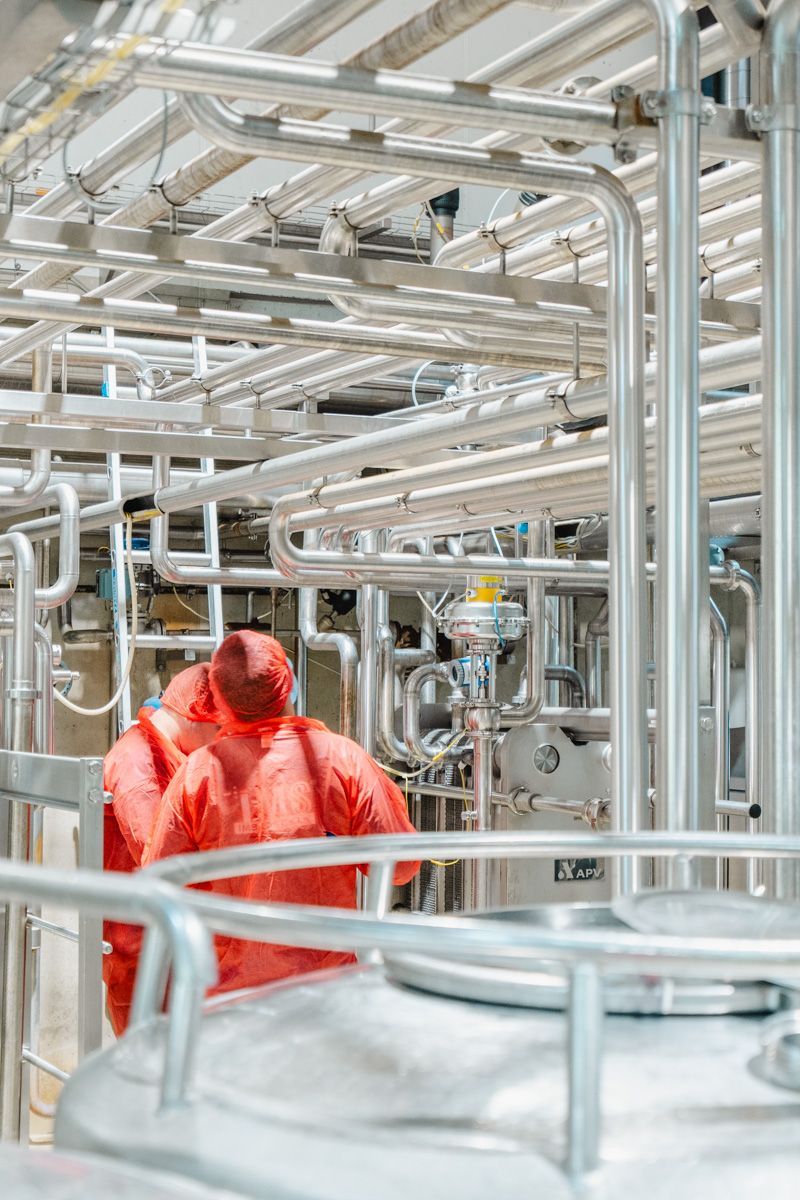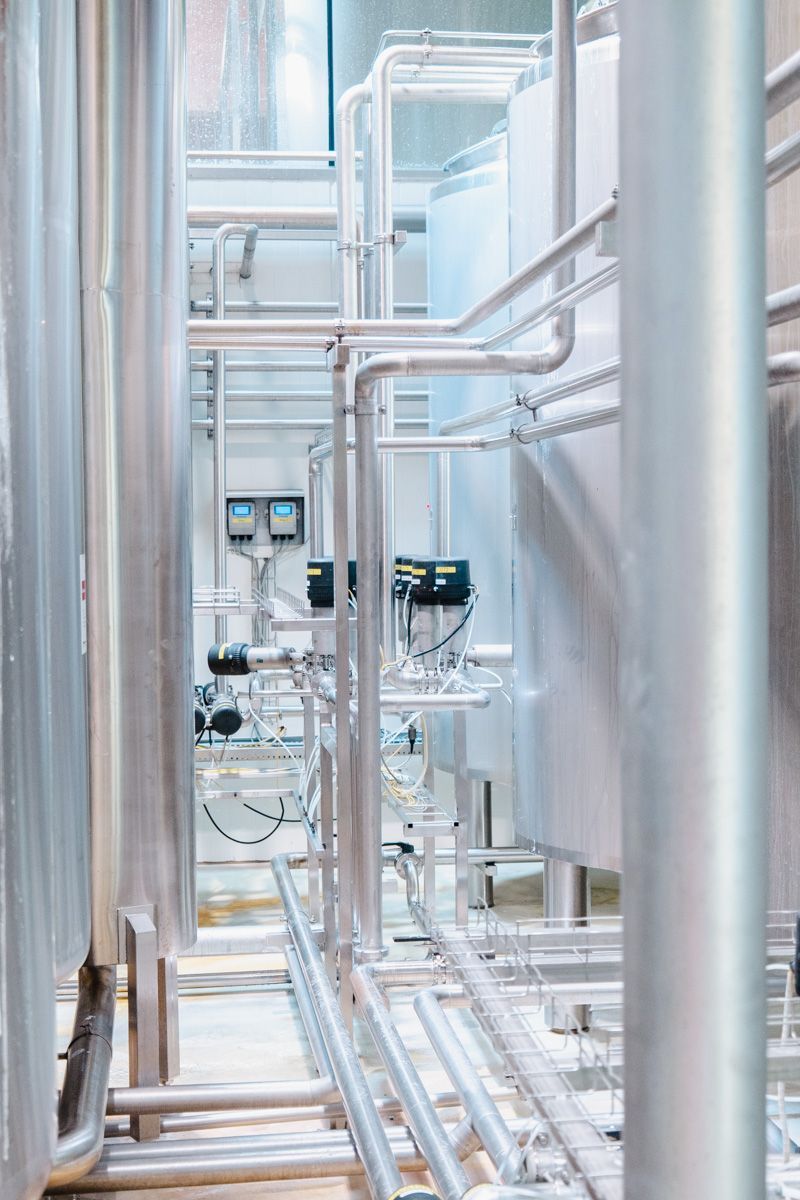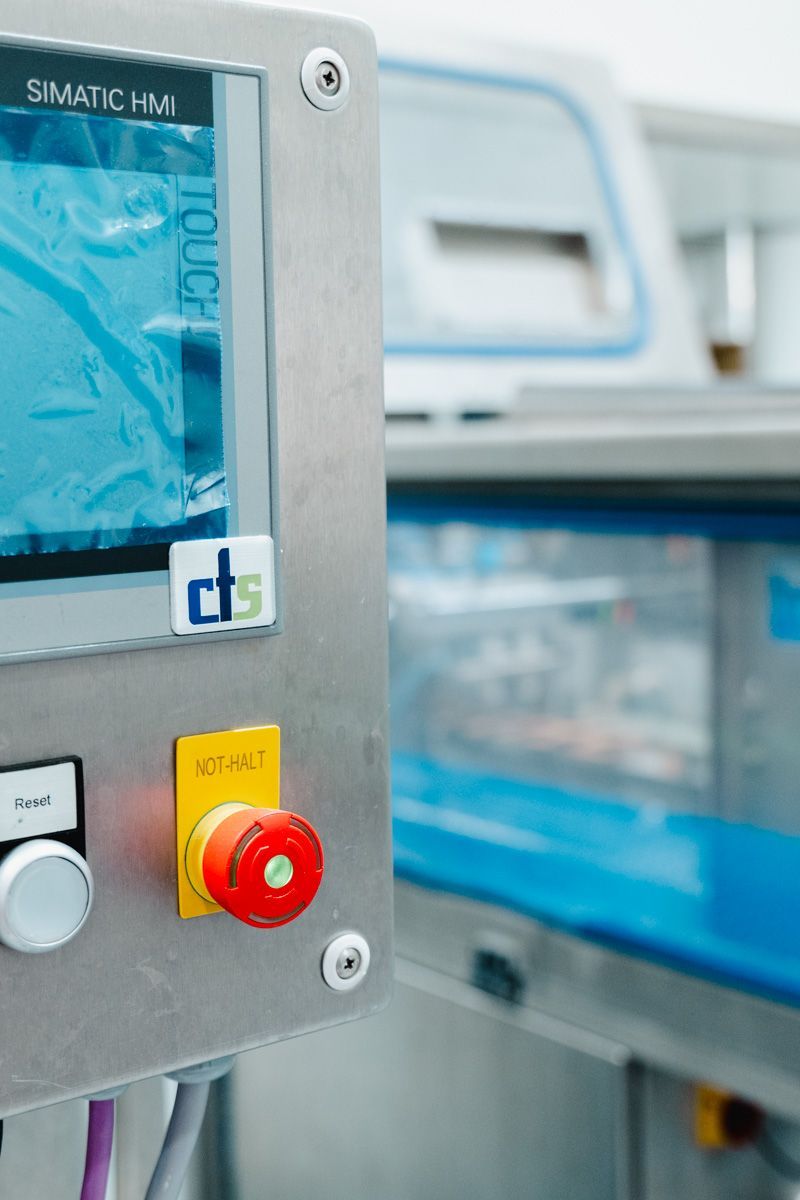Case Study: Process automation in the alpine dairy
Standstill is not an option: the milk must be running again by Monday
Early in the morning. Between the milk tank and the valve block, the operation runs as it has for years - and yet the biggest changeover in decades is imminent. This is because the existing process control system at the Austrian Erlebnissennerei Zilleratal dairy is being integrated with an existing PCS 7 system. The PCS 7 is also being upgraded. The challenge: the changeover has to be completed in one weekend - including control cabinet conversion, software commissioning and signal tests. New step chains, new continuous logics, new visualization, new documentation. What remains: the expectation that everything will run as before on Monday - under future-proof conditions.
What happens when a dairy replaces its entire automation technology - during ongoing operations, with a tight deadline and sensitive processes?
We spoke to Florian, site manager for this project, and Andreas, project manager and “programmer” for this project, about the challenge of integrating modern technology into an established business - without compromising on safety, hygiene and quality.
The question sounds banal at first. But when you enter the dairy, you soon realize that it has nothing to do with the romantic idea of a milk kettle over an open fire.
“The alpine dairy is no longer the way you used to imagine it, with the farmer stirring the barrel,” says Florian. “Everything is automated here too.” Milk is delivered, stored, analyzed, distributed - and processed in different lines.
“Storing is the entry point into the economic cycle,” explains Florian. "Milk tankers come in, the milk is deposited and pumped into various tanks. Processes run via valves that open and close, control valves, temperature and quality measurement - everything that is important for processing." The laboratory is also directly connected: “Samples are taken there and values are recorded that are needed for the rest of the process.”
The milk is turned into a complete range of products on site - everything that ends up in the store: Butter, yogurt, cream, various types of cheese. To ensure that this works reliably, cts handles the entire process automation conversion.
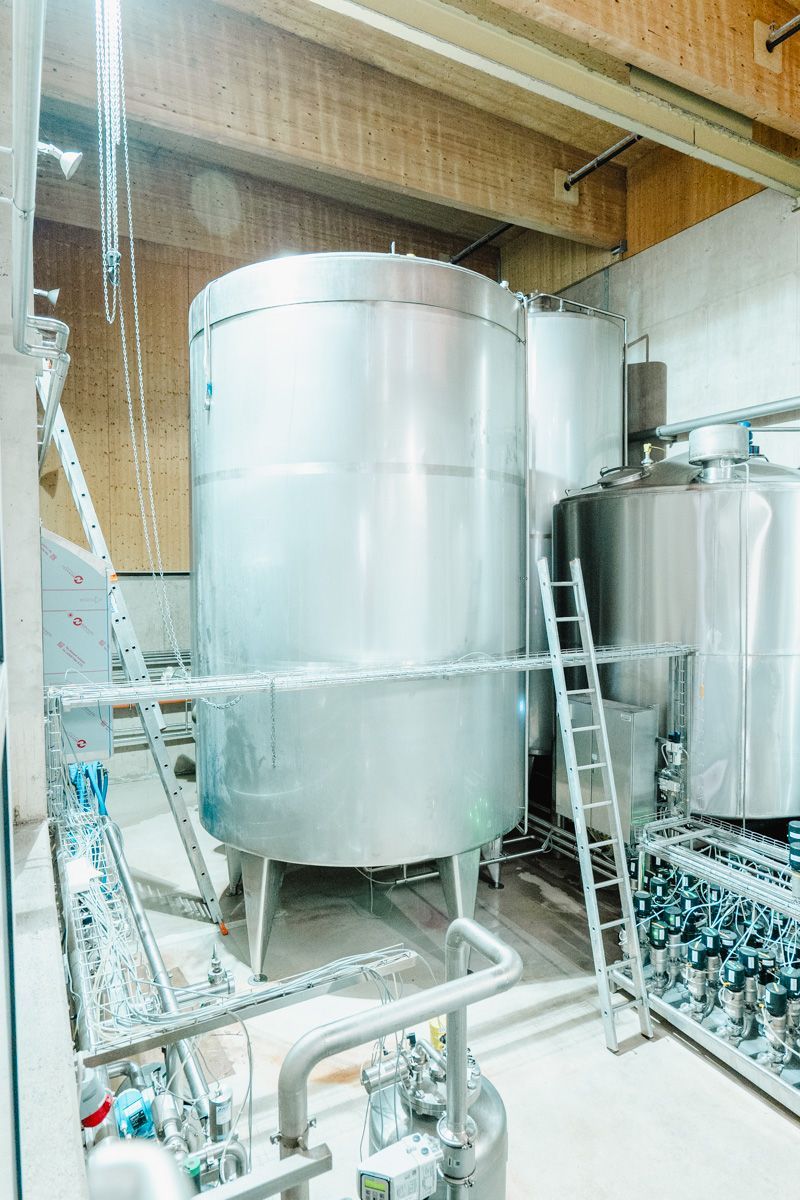
“Our job is to do everything from the sensor to the software,” says Florian. "We control the actuators and sensors, pull new field cables, but also use existing bus cables. We install the remote IOs and program the new system."
Four new remote IOs were installed at different stations in the plant: in the tank farm, in the area for butter, yogurt and cream, in the CIP room for cleaning and in the machine room. “A Foxboro system was previously in use, which we are integrating into a Siemens system - in some cases we are taking over existing systems, in others we are replacing them.”
The decisive phase begins with the planned shutdown in September. “On Friday, when the milk deposited that day has been processed, everything will be shut down,” says Florian. "We then work with 35 people in day and night shifts. Everything is connected up on Friday, Saturday and Sunday, including the Main Control Center. And on Monday morning, milk is put down again - then everything has to work as usual again." Despite the size of the project, Florian remains calm: “If we approach the project with structure, then it will be a success.”
What exactly is CTS's role in this project - what are we doing on site?
Our task is to renew and modernize the existing systems - both technically and functionally. This means reprogramming the software, completely redeveloping the flow chart in the process control system and transferring the existing functions to an up-to-date, stable system environment.
A key point was that the machine operators should be able to find their way around the new system. It was a clear requirement that the interfaces should be designed in such a way that they appear familiar. So it's not about redoing everything - it's about retaining the existing system where it makes sense and transforming it into a modern solution.
In this way, we avoid operators having to adapt to a completely new environment - this reduces training costs and transition problems. Our aim is to make the changeover as simple and smooth as possible - both technically and in terms of people.
What does a project like this look like from the start?
To begin with, we familiarized ourselves with the conditions and inspected the system. We were joined by six fitters from a partner company, Andreas and myself. The truck from Burgkirchen arrived at around 1 p.m. - with the remote IOs, adhesive labels and the rest of the accessories.
The RIOs were prepared at our switch cabinet construction facility in Burgkirchen, specially adapted to the local requirements. The control cabinets are located in hygienic areas - made of stainless steel, with food-safe seals and completely sealed. They must remain germ-free, which is why not just anyone can access them. Not everyone has a key either, which deliberately restricts accessibility.
The initial work is currently underway: We are going through the individual measuring points according to the P&I diagram, identifying them and applying new labels. This helps us when pulling cables later on - and also meets the company's desire to ensure that the entire labeling of the measuring points is clean and uniform. Two or three colleagues are already working directly on the implementation.
At the same time, preparations are underway for the deadline. Wiring is then carried out from the RIO into the field - to valves, temperature or pressure measuring devices. Many cables can already be connected to the RIOs themselves. However, the final connections to the field device are not made until the changeover day. Then everything is connected, a loop check is carried out - and if that goes through, we can continue straight away
What was the trigger for the project - why was cts brought on board?
The old system had reached its technical and organizational limits. There was only one contact person who was familiar with the system - and he managed it alone for years. At some point, this became a risk. We knew that if we wanted to put it on a clean new footing, we had to build a future-proof solution for our customer - documented, manageable and sustainable in the long term.
We were originally intended as a backup. The Foxboro system at the time was being looked after by a colleague from the company - and we were to be put in a position to help look after it in an emergency. That was the start.
Andreas was here for the first time eight or nine years ago. "I took a look at the inventory back then - there was already a PCS 7 system - and spoke to Heinrich Kröll, the Managing Director of Erlebnissennerei Zillertal, about possible options. I told him: "If you want to upgrade at some point, you can also upgrade to PCS 7. At the time, Siemens had already designed it to be so large that you could practically take over the existing Foxboro automation system. But that didn't mean that you had to do it with Siemens - you could just as easily do it with us.
In the years that followed, we continued to support the project. There were initial considerations to implement the changeover in parts, in portions. But other projects were prioritized - and implementation was delayed.
When the final need arose, we decided together: If we're going to do it, let's do it all at once. Not just a changeover or a bit of modernization - but everything. The entire control system, all the control cabinets, all in one weekend."
And what does it take technically?
You have to be able to do both: “Read” and understand the old Foxboro system - and at the same time program PCS 7 properly. There is no complete specification that can simply be worked through. This is system-specific. The customer knows the functions - but not everything down to the last detail.
If you want to convert something like this in three days, you have to really get to grips with the old system. You have to “rebuild it 1:1”, so to speak - with all the functions. Otherwise it won't work.
How should we imagine the changeover process in concrete terms?
The changeover is taking place within a very tight but well thought-out time frame. The last truck arrives on a weekend in September on Friday, the first one again on Monday - in between we have time to completely dismantle the old MCC (Main Control Center), install the new hardware, connect all field devices and commission them. We prepare intensively in advance: The system is put into operation in advance on a test system, all signals are simulated and the software is tested. Then we go on site with around 20 colleagues in day and night shifts - and on Monday morning everything has to be up and running again. It will be a challenge, but it will work.
Many people imagine an alpine dairy to be more artisanal. What does process automation have to do with it?
When you hear “alpine dairy”, many people think of craftsmanship. How automated is it really here?
Only selected tasks that cannot or should not be automated are still manual here. The dairy is also modern - the processes are controlled like in a factory. This starts with delivery and continues with temperature control, valve control and CIP cleaning. Without automation, this would not work efficiently today.
What role does automation play in a food company like this?
The control system is the heart of the system. If something doesn't work - be it heating, cleaning or dosing - the process stops. And because we work in a sensitive environment, it's not just about running, but also about repeatability, traceability and safety. We have certain requirements, including from our customers - and it is essential that we have a system that not only works, but also documents what it does.
What does this look like in practice - where exactly does automation come into play in the system?
We are talking here about the entire value-adding process - from delivery to the cheese maker. In concrete terms, this means that milk is received / deposited, stored, kept in the raw milk store, then centrifuged and pasteurized. It is then stored and prepared - as cream, butter or cream. This is also where the raw material for the cheese makers is produced.
The cheese makers themselves already existed in the PCS 7 system. But the classic dairy part upstream - it can't work without it. It has to work in the same way, otherwise everything stops.
Of course, there is still manual work: the blocks of cheese are cleaned, processed and pre-packed. Butter is portioned and packaged manually. But everything that makes sense to automate should also be automated.
The aim is to reduce the workload for employees - as much as possible. For example: the machine operator currently still has to go into the plant and enclose coupling sheets. This is also to be automated in future so that it can be done directly from the control room.
It's not about replacing jobs - it's about reducing physically demanding or dangerous work. Automation here means Protecting employees, not competition.
What do you think has the greatest influence on product quality - when you think about automation, validation and operation together?
Quality is always the goal - but in practice it is often decided on many small points: control, cleaning, documentation. Where do you see the greatest leverage to really ensure quality?
“Clearly: precision,” says Florian. The whole process has to be precise. The milk has to be at exactly the right temperature and the cleaning has to take place exactly in the intended cycle. Every single step has to be right - otherwise the whole system breaks down. Put simply, you can't do it without precision.
Andreas: "For me, it's mainly the concentrations - for example, with lye and acid. If they're not right, the cleaning performance is at risk. And then it's about reproducibility: I have to make sure that the processes always run the same way. Trend recordings help us with this - temperature curves, flow rates, all process values that we can trace afterwards." This is the only way to prove quality.
From your point of view, what is the goal of the project - in other words, how can you tell that it was successful?
If the truck can unload the milk on Monday and then clean it - then it was a success. Of course, the milk must also be able to be processed as usual. That's what it all boils down to.
But that is of course only the visible result. The project itself has been running for much longer - the development of the software and the planning of the hardware began in December last year. And it's not just about pumping milk from A to B in the end. It is also important that the customer sees the progress.
They can see what is happening - on the cables, on the visualization. He accompanies us through the entire project, wants to know where we are, what can be tested, what the current status is. This feedback is ongoing - until we get to the final changeover weekend.
We have a good lead time to prepare for these three critical days. The customer helps actively - simply because he knows his system inside out. This is crucial for success


